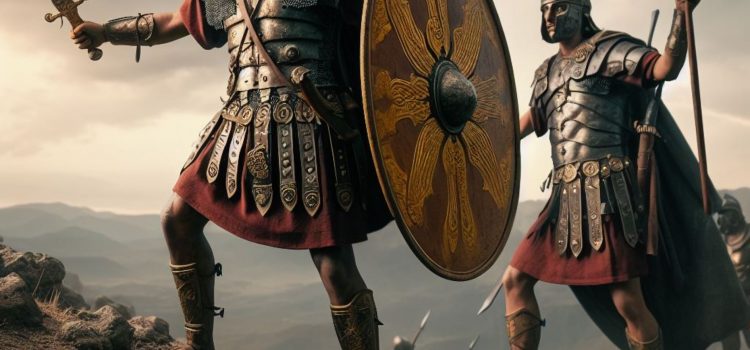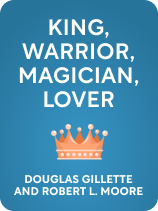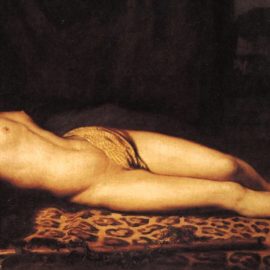

This article is an excerpt from the Shortform book guide to "King, Warrior, Magician, Lover" by Douglas Gillette and Robert L. Moore. Shortform has the world's best summaries and analyses of books you should be reading.
Like this article? Sign up for a free trial here.
What does the Warrior archetype look like? What does it mean to embody the Warrior mindset?
The Warrior archetype, as defined by Carl Jung, is a part of the male psyche concerned with carrying out tasks and adopting discipline and courage. While the Warrior can be a healthy expression of masculinity, it can also be negative if unbalanced or immature.
Learn what it takes to develop a healthy Warrior mindset.
What Is the Warrior?
Whereas the King is the leader of a man’s psyche, the Warrior archetype is the part that gets things done. Phrased differently, the King gives commands and the Warrior carries them out.
However, the Warrior aspect is about much more than just turning decisions into actions. The Warrior—like the idealized knights in King Arthur’s legends—is a symbol of discipline, strength, skill, and loyalty.
When a man has a well-developed Warrior aspect, his first concerns are always self-discipline and self-control. This is because the greatest Warriors are those who master their own minds; by doing so, they develop the will, focus, and courage to accomplish incredible things. Therefore, someone with a strong Warrior aspect can act quickly and decisively, without getting distracted by stray thoughts or feelings.
Although he’s not a warrior in the usual sense, the legend of the Buddha gives an excellent example of this aspect: The Buddha achieved such perfect mastery over himself that he was able to defeat an evil god named Mara. This god had great powers of illusion and temptation, but the Buddha maintained control of his mind, and so he wasn’t affected. Mara eventually realized that he couldn’t trick the Buddha, and he was forced to give up.
(Shortform note: This example is especially apt for a discussion of healthy masculinity because the Buddha defeated Mara without ever attacking him. As we’ll discuss shortly, someone who’s too quick to use force—or, worse, who enjoys doing so—is being influenced by an imbalanced Warrior aspect.)
The Warrior’s discipline also drives a man to keep honing his skills so that he’s better able to accomplish his tasks and achieve his goals, whatever those might be. For instance, a musician who practices every single day is exercising a Warrior’s discipline; so is an office worker who constantly looks for ways to boost his productivity and the quality of his work.
Recall that the Warrior is also responsible for loyalty. This means loyalty to something larger and more important than any individual, such as a country, a deity, or a mission. For instance, an environmental activist and a religious leader are both people who have pledged their loyalty to a greater cause.
Crucially, a man with the Warrior’s loyalty values his cause more highly than he values any person, including himself. As a result, he’s willing to endure great hardships and countless defeats in pursuit of his goals. With that said, a mature Warrior aspect also helps him to think rationally—to accurately assess his own abilities and decide how he could do the most good, rather than uselessly throwing himself against impossible odds.
Finally, someone with a mature Warrior aspect has recognized and accepted that he’ll die someday. Rather than scaring or depressing him, this awareness of his own death drives him to make the most of whatever time he has. As such, he fully experiences and appreciates every moment that he lives, and approaches each task as if it’s the last and most important thing he’ll ever do. To sum it up with a common saying, the Warrior lives each day as though it were his last.
The Immature Warrior: the Hero
The boyhood form of the Warrior aspect is called the Hero. The main difference is that, whereas the developed Warrior has overcome his fear of hardship and defeat, the underdeveloped Hero has never been afraid in the first place. Someone who’s stuck in the Hero aspect thinks that he’s invincible and his abilities are limitless. As a result, when he does fail (as he inevitably will at some point), that failure is a crushing blow to his self-image and self-esteem.
However, the Hero is the most mature aspect of boyhood psychology. This is because it’s the aspect that tells a boy he’s ready and able to face life’s challenges, become independent, and achieve his goals. As such, it’s also the aspect that’s responsible for a boy breaking away from his parents and making the transition to adulthood.
(Shortform note: In traditional Jungian psychology, Hero and Warrior are two different names for the same archetype. Also, while the Hero’s drive to overcome challenges is needed for breaking free of childhood and transitioning into adulthood, it’s not the only aspect involved in major life changes. For instance, the Explorer’s goal is to discover how to live a happier and more fulfilling life, and the Rebel seeks to destroy power structures that no longer serve him—such as the parent/child dynamic of boyhood.)
The Imbalanced Warrior: Cruelty, Obsession, and Cowardice
The Warrior is inherently detached from emotions (including his own) and from interpersonal relationships—remember that this aspect’s main concern is with taking action to support a cause. Because of that detachment, it’s especially easy for the Warrior to develop improperly or become imbalanced. As with all of the aspects the authors discuss, an imbalanced Warrior can manifest in two opposing ways.
The Zealot
First, a Warrior lacking discipline and self-control can become a Zealot. Unlike the balanced Warrior aspect, which takes well-reasoned and appropriate action, the Zealot is sadistic: He loves to cause pain and destruction, and he will do so at every opportunity. Like the members of the Spanish Inquisition, the Zealot is eager to fight against anything that he sees as an enemy to his cause, and he fights using the cruelest methods he can think of.
(Shortform note: Zealots act the way they do because they see themselves as embodiments of “good” fighting against “evil.” In The Lucifer Effect, psychologist Philip Zimbardo explores why and how seemingly good people can turn cruel, like the Zealot. Zimbardo says that one key part of this shift is dehumanization, which happens when someone views others as less than human. Typically, people will dehumanize those who are different from themselves: people of a different race, or who follow a different religion, have different political beliefs, and so on. Such people also tend to dehumanize themselves, meaning they stop viewing themselves as individuals with morals and start thinking of themselves as an impersonal force.)
The Martyr
At the other end of the Warrior spectrum is the Martyr. The healthy Warrior aspect is willing to endure hardship for a cause, but the Martyr suffers for no real reason.
This pointless suffering happens because someone with a strong Martyr tendency sees himself as powerless; he severely underestimates what he’s capable of. As a result, he doesn’t think he can do anything except endure whatever abuse comes his way. To give some examples, this aspect is common among people who stay in toxic workplaces or abusive relationships because they don’t think it’s possible to leave.
| When Leaving Doesn’t Seem Like an Option In some cases, it truly is dangerous for people to try to leave abusive situations, especially relationships. However, there are still options and resources that can help them break free of their abuser and their internal Martyr. A few examples are: 1. The National Domestic Violence Hotline, (800) 799-7233 2. The National Coalition Against Domestic Violence’s list of websites and hotlines, which focus on specific age or racial groups, as well as victims who are disabled or LGBT+ 3. Searching “domestic violence resources” and their city or state to find accessible shelters, attorneys, counselors, and financial assistance |

———End of Preview———
Like what you just read? Read the rest of the world's best book summary and analysis of Douglas Gillette and Robert L. Moore's "King, Warrior, Magician, Lover" at Shortform.
Here's what you'll find in our full King, Warrior, Magician, Lover summary:
- Why modern men struggle more with their masculinity than previous generations did
- How a lack of healthy masculinity hurts society
- The two foundational requirements for healthy masculinity






